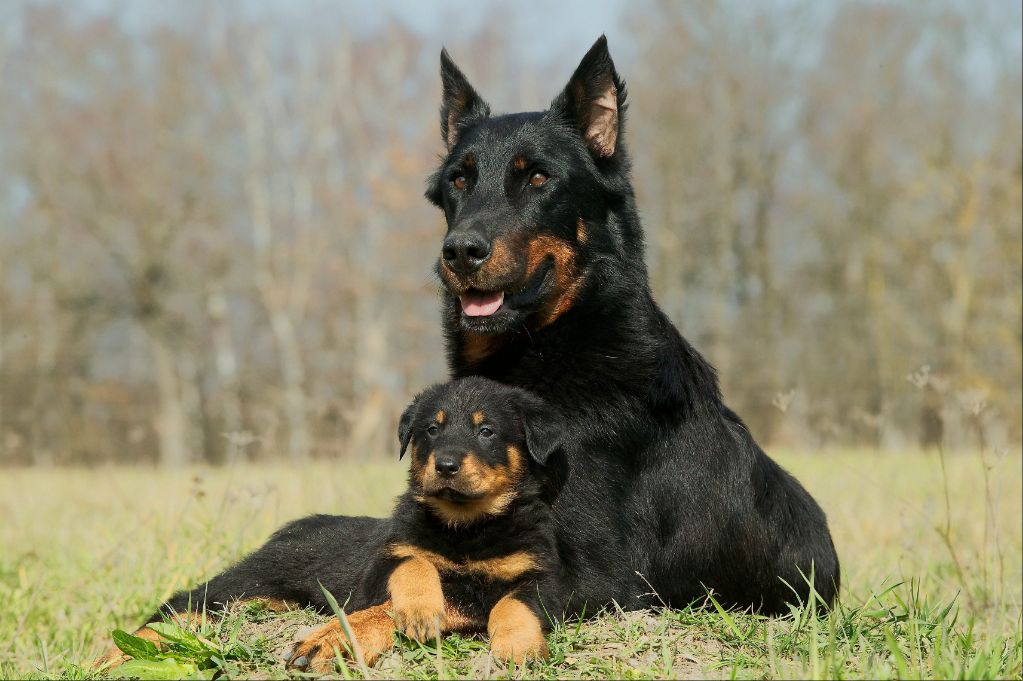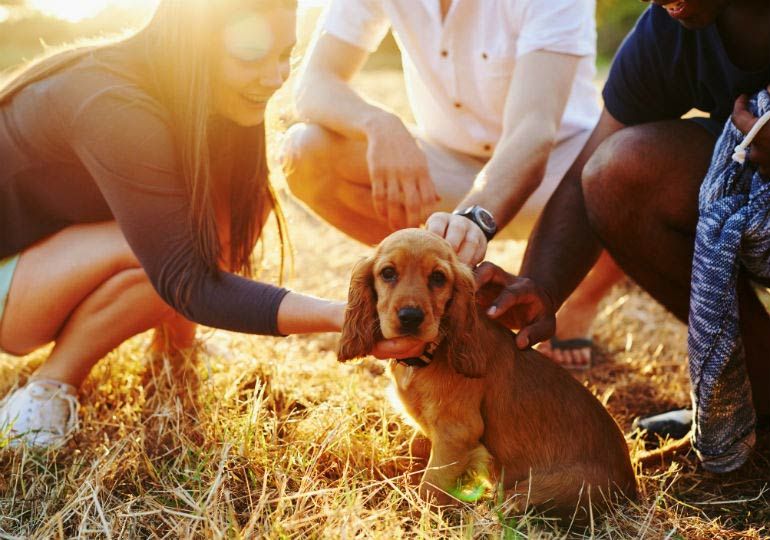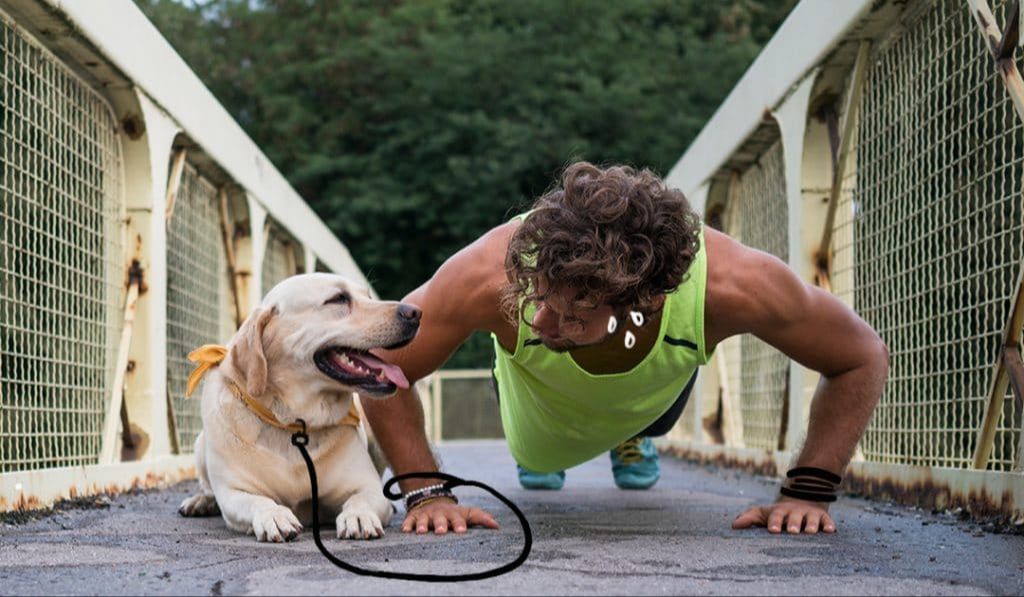Introduction
Dogs have lived alongside humans for thousands of years, and in that time a strong bond has formed between our two species. One manifestation of that bond is the instinct many dogs have to protect and defend their human owners. This protective drive stems from the pack mentality inherent in dogs, as they often view their human families as their “pack” and the owner as the “alpha”.
Like most behaviors in dogs, the specific ways dogs demonstrate protectiveness can be influenced by a combination of genetic factors related to breed tendencies as well as upbringing, socialization, training, and environment. While some breeds have been selectively bred to excel at certain protection tasks, most dogs will display basic instincts to alert, defend, and guard to some degree. Understanding the origins of your dog’s protective behaviors, and learning when and how to intervene, is key to handling this complex trait appropriately.
Pack Mentality
Dogs are pack animals by nature and view their human family as members of their pack. According to VCA Hospitals, dogs do not try to “dominate” humans in the household but rather draw conclusions about their role and status based on your behavior towards them. As pack members, dogs have an instinct to defend the other members of their pack if they sense a threat.
According to North Park Veterinary Clinic, a dog’s pack mentality and ancestral instincts take over when they are around their human family. They view you as a fellow pack member and will defend you if they perceive a threat, even if that threat is another human or animal. This pack mentality and instinct to protect is deeply ingrained in dogs.
Bond with Owner
Dogs who have a close bond with their owner will be more likely to act protectively towards them. Research shows that when a dog feels a strong attachment to their human, they see themselves as part of the same social group or “pack”. This pack mentality leads dogs to defend their owner when they sense a threat [1].
Additionally, the more time an owner spends with their dog through daily walks, play, training and affection, the stronger the bond will become. Human-animal interaction releases oxytocin in both the owner and dog, which promotes feelings of trust and security. With a strong bond, the dog is more motivated to keep their loved one safe from harm [2].
Breed Matters
Some dog breeds are more naturally protective than others due to traits that have been selectively bred into them over generations.
Guard dog breeds like the Doberman Pinscher, German Shepherd, and Rottweiler are often considered to be the most protective breeds. They have strong guarding instincts and a tendency to be cautious around strangers (AKC, https://www.akc.org/dog-breeds/best-guard-dogs/). These breeds are intelligent, loyal, and when properly trained can make excellent guardians of home and family.

Herding breeds like the Belgian Malinois and Australian Shepherd can also be very protective. Their herding heritage means they have strong protective and territorial instincts that can translate into guarding behavior if properly directed (My Gavet, https://www.mygavet.com/services/blog/most-protective-dog-breeds).
While specific breeds may be more inclined towards protectiveness, proper socialization and training is key to developing a dog’s natural guarding abilities in a positive way.
Socialization is Key
Socialization during the first weeks and months of a dog’s life has a huge impact on their behavior as an adult dog. Puppies have a prime socialization period between 3-12 weeks when they are most receptive to new experiences, people, animals, environments, etc. According to research, dogs that undergo socialization during this critical period are less likely to develop behavioral problems like fear, anxiety, and aggression later in life [1].
Well-socialized dogs are able to tell the difference between real threats from benign situations or strangers. They have learned what is normal through varied, positive exposures as a puppy. Poorly socialized dogs, on the other hand, may react fearfully or defensively in non-threatening circumstances. They are more likely to be overprotective due to underlying anxiety. Without proper socialization, they have not learned how to tell friend from foe.

Owners should expose puppies to as many new but positive experiences as possible during the prime 3-12 week period. This includes introducing them to different people, environments, sounds, animals, handling, etc. in a gradual, positive manner. Proper socialization gives dogs the tools to be confident and sociable as adults.
Warning Signs
There are certain behaviors that can indicate your dog is feeling threatened or aggressive. Some common warning signs of aggression in dogs include growling, barking, and standing between their owner and a perceived threat.
Growling is one of the most common signs that a dog may bite or attack Aggression in Dogs – VCA Animal Hospitals. It is a clear warning indicator that your dog feels threatened and may escalate to biting if the threat continues approaching or provoking them. Growling often occurs alongside freezing, staring, and showing teeth.

Excessive or threatening barking can also signal potential aggression, especially barking accompanied by a stiff, upright stance. This rigid posture indicates your dog is poised and ready to attack if pushed. The bark itself may sound guttural and menacing compared to a dog’s usual bark.
Finally, physically putting themselves between their owner and the perceived threat is a protective stance that warns the threat away. Standing guard indicates your dog feels you are in danger and is ready to defend you if the situation escalates. This behavior may occur alongside growling or barking as well.
When to Intervene
It’s important to intervene and redirect your dog’s attention if they start displaying protective behaviors in benign situations where there is no real threat. For example, if your dog begins barking aggressively when a friendly neighbor or delivery person approaches, you’ll want to immediately get their focus back on you.
Use treats, toys, or commands like “watch me” to shift their attention away from the perceived “threat.” Reward calm behavior and don’t inadvertently reinforce aggressiveness by comforting or petting an anxious dog. The key is interrupting the obsessive mindset and avoidance of situations that trigger the overprotective response.
However, you shouldn’t punish or scold the dog as this can backfire and increase anxiety. Be patient and consistent, and they will learn that certain situations are not scary with your guidance. But if protective instincts persist despite training efforts, seeking help from an animal behaviorist may be needed.
Professional Training
While some dogs have natural protective instincts, professional training is often still required to develop a dog into a competent protection animal. This type of training should generally only be pursued with reputable professionals who use humane, positive reinforcement techniques.
According to Integrity K9 Services (https://www.integrityk9services.com/), protection dog training includes both “high obedience training and the highest level of expert protection training.” This obedience foundation provides control and focuses the dog’s protective instincts appropriately. Protection dog training schools like Nitro Canine (https://nitrocanine.com/training/personal-protection/) also emphasize balanced training methods, without relying solely on prey drive or aggression.
Even for naturally protective breeds like German Shepherds or Rottweilers, professional protection training is advised. The trainers will evaluate the specific dog’s abilities and temperament and customize the training regimen accordingly. They will also proof the dog’s skills in realistic scenarios. The end result is an obedient protection dog that knows when and how to defend its owner if truly needed.
Providing Proper Care
Meeting a dog’s basic needs is crucial for reducing stress and aggressive tendencies. According to the ASPCA, dogs require regular opportunities to exercise and receive affection. Lack of exercise can lead to pent-up energy and frustration that gets expressed through aggression (ASPCA). Providing adequate physical and mental stimulation is key.
Make sure your dog gets regular walks and play time for exercise. Take them on at least two brisk 20-minute walks per day. Provide interactive toys and play fetch or tug-of-war to engage their mind and body. Socialization with other dogs and people is also important, so arrange play dates or take them to a dog park regularly.

In addition to physical exercise, dogs need mental stimulation to stay happy and calm. Provide puzzle toys, hide treats around the house for them to seek out, enroll them in a training class, or work on commands daily. Keeping their mind engaged prevents boredom and frustration.
Show your dog daily affection through petting, praise, and treats to reinforce the human-canine bond. A well-adjusted, content dog is less likely to show unwarranted aggression. Meeting their needs for activity, socialization, and bonding reduces overall stress and the potential for reacting aggressively.
When to Seek Help
In most cases, a dog’s protective instincts are perfectly normal and healthy. However, if their protective behavior appears extreme or puts other pets or people at risk, it’s important to seek help from an animal behavior professional.
According to the ASPCA, signs that a dog’s protective instincts have gone too far include growling, snapping, or biting when approached while eating or resting. A dog that shows aggression towards family members or strangers, or who guards furniture, toys, or other objects, may also require intervention.
In these cases, it’s best to consult a veterinary behaviorist. They can assess your dog’s behavior and temperament and design an individualized training and management plan. This may involve counterconditioning techniques to change your dog’s emotional response as well as obedience work to increase impulse control. In certain cases, medication may be recommended as an adjunct treatment. The earlier you seek help, the better the outcome is likely to be.
With a customized behavior modification plan, consistency, and patience, many dogs with protective aggression can learn to control their instincts and coexist safely with people and other pets. But professional guidance is key to ensuring everyone’s wellbeing. If your dog exhibits warning signs, don’t delay in consulting an experienced veterinary behavior professional.
